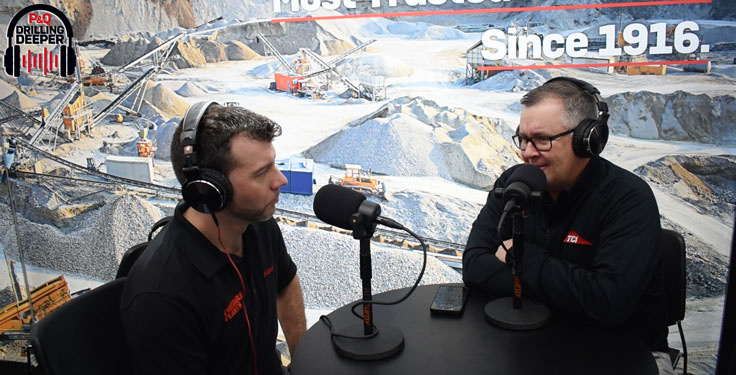Overcoming Oversize: Oversize and confinement (Part 4)
Variables & concepts to consider
So, we now have our energy model: the more energy applied to a set mass of rock, the smaller the maximum size of post-blast rock. All of this assumes proper blast variables are in place.
Assuming what’s mentioned above is true, there are two important concepts that will affect the confinement of the energy: the stemming and burden of the blast. In the absence of changing explosive formulations and modifying the detonation process of the explosive, the stemming is the only variable that affects the efficiency of the explosive. It is always assumed that 100 percent of the explosive’s energy is retained in the blasthole when designing a blast. But a problem can occur: If the stemming is not retained, meaning it blows out the top of the blasthole, then the energy immediately begins to be lost.
If the blast is designed assuming 100 percent of the explosive energy is utilized but now only 70 percent is utilized due to a loss of stemming, then there is not enough energy for the design. This means the blast has too little energy and is overconfined. All of this can result in oversize in the burden of the blast due to overconfinement.
This same effect can occur from improperly manufactured explosives, breakdowns of explosives from water or extended sleep times, or poor loading and priming practices. Modifications to stemming do have a maximum benefit: the explosive efficiency cannot be above 100 percent.
When the stemming is brought to a point where the explosive achieves 100 percent efficiency, there is no need to increase the length of stemming further. In fact, too much stemming can lead to more overconfinement of the blast because pounds of explosive are traded in the hole for stemming, which reduces a blast’s overall explosive energy.
This same effect occurs if the burden of the blast is too large for the explosive energy, as can be seen from Johnsson and Hofmeister’s study. As the burden increases for the same amount of explosive energy, the explosive now has too little explosive energy to sufficiently break the rock mass. This leads to a state of overconfinement and a constant increase in the maximum oversize from the blast.
The reverse of this is also true, unlike the stemming principle. The smaller the burden, the smaller the maximum rock size will be after the blast – until that asymptote is reached.
Still, small burdens are often associated with problems such as flyrock and increased costs. With this in mind, one method to reduce oversize and the maximum rock size post-blast is to reduce the burden while maintaining appropriate stemming. The trained explosive engineer or mine manager must then make the decision about the tradeoff between increasing costs, increasing muckpile movement and decreasing oversize.
These are typically all site-specific decisions – not only from a financial management standpoint but from a performance standpoint, as the changes and impact will vary from one site to the next.









